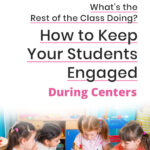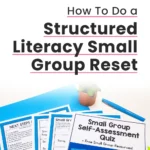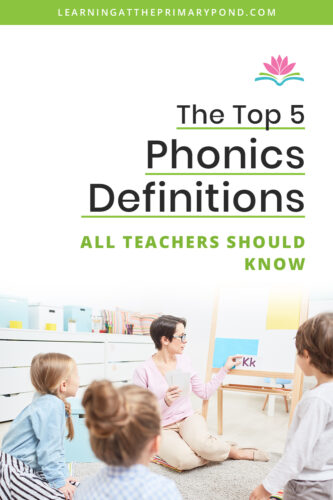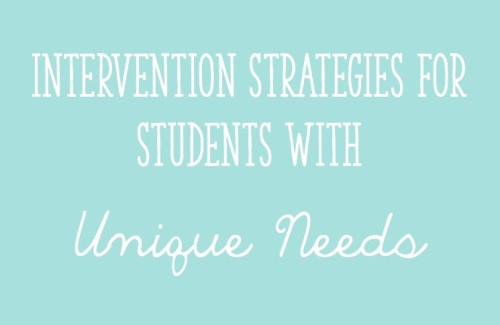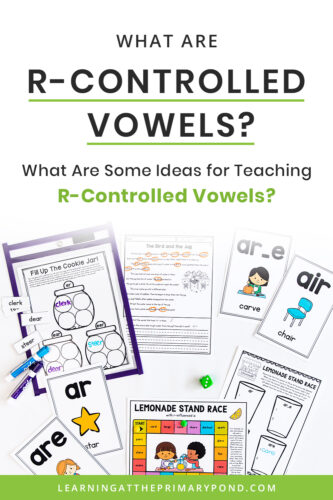Do you ever feel like time moves 10 times faster during small group instruction? You’re just getting going on a packed lesson, and all of a sudden, “DING!” the timer goes off to switch tasks or groups.
That small group times goes fast, but there’s also so much to consider:
- How should students be grouped?
- What should be included daily?
- What should be included weekly?
- Should you always teach Guided Reading in your small group lesson?
- What are the other students in the classroom working on while you lead a small group?
- How do you really get the most out of a small group lesson?
To help you plan and think through your small group lessons, I have a video (and transcript, if you prefer to read) that will walk you through how to use this sacred time wisely!
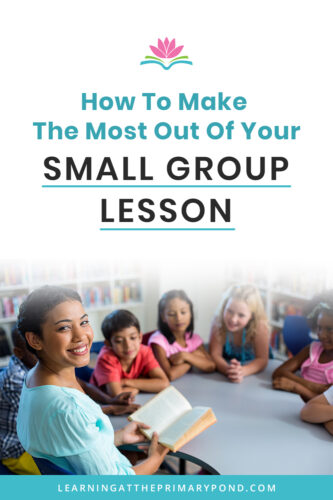
Transcript if you prefer to read:
“Hey, I’m Alison from Learning At The Primary Pond. I’m a literacy specialist and in this video I’m going to share how you can make the absolute most of your precious small group minutes. Before we dive in, if you haven’t subscribed to my channel (https://www.youtube.com/@learningattheprimarypond) yet, make sure to do that now, and then also hit the little bell so that you’re notified every time I post a brand new video about teaching literacy in K2.
As you probably already know, small group reading instruction is incredibly valuable, can be highly impactful, and is a great way to differentiate and really meet students’ needs. But at the same time, small group instruction can also be one of the most challenging, if not the most challenging, parts of your literacy block. A big reason for that is because those minutes can truly fly by. You might feel rushed and find that it’s hard to fit everything in. I can definitely relate to that. If you have ever felt rushed or maybe frequently feel rushed during your small group time, just type “rushed” in the comments so that other teachers know that they are not alone.
I know when I first started teaching and I was noticing that I felt rushed during my small group instruction, I thought that I was doing something wrong. It’s not necessarily that I was doing something wrong, I just needed to change the way I was thinking and bring some focus to what I really wanted to work on during that small group time. So again, if you have ever felt rushed during your small group minutes just type “rushed” in the comments so that other teachers know that if they feel that way they are certainly not alone.
I think the number one most important thing that really helped me shift my mindset with small group instruction, and also make the most of those minutes, is to not try to cram every type of literacy activity into small group. Instead, I need to really be focused on “What does this group of kids need? What is going to move them forward?” Whether it’s pre-reading skills, reading skills, wherever they are in their journey, what do they need the most? In addition to that, to also look at my literacy block as a whole. So in small group we might want to fit in high frequency words, reading, phonics, writing. All of those are important skills, and it can be highly impactful when you work on all of those in a small group setting. Absolutely.
But the issue is that your small group minutes are probably limited, and you’re simply not going to be able to fit everything in at least not every day. So what I would encourage you to do is maybe make a list of all the skills that you want to focus on in your small groups, but then also look big picture and look at your literacy block as a whole. Whole group instruction is still very valuable and can still be highly impactful. So if you feel good about how your writing time is going, or maybe you’re planning for the school year and you have great plans for your writing block, and maybe during that writing block you are going to be working with some students one on one, or maybe in a small group setting even, then do you need to do writing in your small group? Maybe, but maybe not.
Same thing goes for phonics. If you have a phonics block and you’re going to be doing some small group instruction during your phonics block – this totally depends on the age level of the kids because when they’re doing pre-reading skills and early readers phonics and phonological awareness is kind of the main thing right? But maybe you’re teaching late first or second grade even, and you have a really solid phonics block and you have time for phonics small groups in that block. Well you don’t necessarily need to do a ton of phonics work in your normal reading small group time. So those are just some examples, but the main point here is that not everything has to fit into your small group time, so think about your literacy block as a whole to prioritize.
And then also just consider the fact that you could do A day, B days, where some days you focus more on maybe phonics and other days you spend more time reading the text with the kids. So it doesn’t necessarily have to be exactly the same every single day, although consistency of course is always helpful.
Okay, so those are kind of the first things I would consider. But then I also have some questions for you, the list of questions that you’ll want to think about as you really dig into your small group time.
Number one: How are you going to group your students, to even pull them together into a group?
Number two: What are you going to include on a daily basis? We’ll talk about all these questions by the way.
Number three: What should you include on a weekly basis? So remember we talked about that A day, B day situation, you might have certain things where maybe you’re not doing it every day or every lesson with the group but maybe you’re making sure that you do it every week.
Another question that you might wonder that we’re going to talk about is should you always teach “guided reading?” I’ll explain why I’m using quotes later.
The other thing to consider is what are your other students doing while you’re pulling the small groups? Yes, it matters a lot what you’re doing in your small groups, but you don’t want the other kids to be interrupting you, wasting time. You want them engaged and working on literacy activities that are going to help them move forward with their literacy skills as well. So lots to think about, but let’s go ahead and dive in.
Okay, so the first question that I mentioned was pertaining to grouping. So how are you going to group your kiddos? And there’s definitely different ways to do this. The vast majority of the time my preference is to have the groups differentiated by skill. So when it’s kindergarten, early first, a lot of it is just phonological awareness, maybe some basic phonic skills. I want to group together the kids that are ready to work on more or less the same thing, otherwise it kind of just becomes whole group instruction.
Most of the time we’re working in similar skill areas, and then when it comes to their reading levels or whatever, it doesn’t have to be everybody’s at the same reading level. You could have a little bit of variance and that’s totally fine. Again, it just kind of depends if your kids are early readers and they’re working with decodable books based on specific phonics patterns. It’s a lot easier if they’re working on similar groups of skills there. When they’re a little bit older, leveled readers or whatever other kind of texts that you have, you may want them to be more or less on the same level.
Now it actually isn’t necessary to have them on the same level all the time, especially if you got kids that maybe are working on different comprehension strategies like summarizing, or I don’t know, cause and effect, or maybe they’re working on building fluency right, and you want to teach them specific strategies for those skills. So it might be a nice idea or a nice practice to once in a while allow kids to come together that aren’t necessarily at the exact same skill level because maybe you have a lower reader who is struggling with retelling but then maybe you also have a higher reader or slightly higher reader, maybe don’t want two ends of the spectrum, two totally opposite ends, but maybe you have a more advanced reader who’s also struggling with it. It could be that you pull them together and you read the text to them so they can all access it, and then together you work on that skill. Or it could be that you just pick a text that you know that they could all read no problem and then you work on the skill with it there.
A lot of the time, especially with kids that are still learning how to read and are relatively early on in the phonic scope and sequence I do feel similar ability works well just because we have mixed ability going on already in whole group. But as the kids get a little bit older while it still can be very helpful to have them on similar reading levels it’s okay and probably even a good thing to mix that up sometimes and to just really do skill groups regardless of specific reading level.
Then the question is where do you get that data from, how do you know what skill level they’re on? At the beginning of the year you’ll want to use some kind of assessment to evaluate their phonics, phonological awareness skills. I do have a free diagnostic phonics assessment in the Learning at the Primary Pond Teachers Pay Teachers Store. We have a reading level assessment again, depending on where the kids are at. Of course you’ll evaluate them at the beginning of the school year but you’ll also want to continue evaluating them as the year goes on.
So every couple of months based on data, it doesn’t have to be anything formal. But if you’re noticing when you’re taking a running record and this kid is doing great, let’s move them up, you’ll make adjustments as you go. You may have them together in their groups for a month, for a couple of months, but we want to make sure that they’re fluid and that you’re really assessing can or should students be interchanged between those groups.
So that kind of brings me to another related question, and that is a question of should you always teach “guided reading” in your small group setting? The reason I’m using air quotes is because I kind of use the term guided reading loosely. To me guided reading is just where you are bringing the kids together and you’re providing guidance in them to read the text, to be successful. So you might be discussing the topic ahead of time, you might be maybe chunking the text so they only read some of it. They stop, you discuss, and then you keep going. You might be pre-teaching some words. You might be reviewing phonics patterns before they read. To me guided reading just means you are guiding the kids in reading a text. In my mind, guided reading can be done with decodable texts, it can be done with leveled texts, really any kind of text.
Now I know that some people define guided reading differently so again, that’s why I use the air quotes. Guided reading is sometimes thought of where kids get access to texts that are a little bit more challenging than what they can read on their own and then the teacher guides them in being successful with it. That’s another definition of guided reading. So to the question of should you always teach guided reading in small group, I’m going to just toss some ideas at you.
Number one, with those early readers you may be doing more of a phonics and phonological awareness focus, so there may be less text reading. It really just depends on the level of your kids and where they’re at.
Number two, it is also really beneficial to give kids access to grade level text, we’re talking after they can decode, right? If they can’t decode much at all or they’re still in the early stages we can give them access in whole group lessons. But with the kids that have a decent amount of phonic skills mastered and they’re decoding, you can pull kids together and maybe they are a little bit lower than grade level with their reading, but you can provide that scaffold and you can provide that support. You can pre-teach words, you can chunk the text like we talked about earlier, and you can help them be successful with that text that’s just a little bit hard.
So that technically wouldn’t fit maybe a traditional definition of guided reading because some people again define guided reading as being with leveled text, that’s a little bit above what students can read on their own. But to me that’s also a guided read because the kids are reading not instructional level but grade level text, and you are guiding them so that they can be successful with it. So that was a lot of information, but just some things to think about.
Next up, let’s talk about what to actually include in your daily small group lessons. I also have some free materials for you, this and much, much more. So I’ll just briefly run through what I include.
Number one, we might include some high frequency words. We might do a phonological awareness little drill, just some kind of warmup for them at the very beginning to get into the lesson.
Also at the beginning, and this may actually come before we do the little warm-up, but if the kids sit down and you have texts, whatever kind of text it is in a basket that they’ve read previously you can have them just pull books and reread for fluency or read parts of books for fluency, depending on how long the texts are. And then while you do that you can take an opportunity to take a running record of one student’s reading. And so in the running record it really allows you to see a lot of things. It allows you to see number one, if they read something and it doesn’t make sense are they self-correcting. Number two, are there certain phonic skills, maybe they’re struggling with short A and short E, this has a lot of CVC words, maybe those are tricky for them. It just allows you to see a lot about their reading, even evaluate their fluency, and ask them a question or two to see how they comprehend it. So that’s a really good way to get data about kids on an ongoing basis.
So we’ve sat down, we have either done some kind of warm up and/or have done those fluency rereads, rereading is so good for fluency. And then we’re either going to work maybe on reviewing a phonics pattern or working on something that will help them be successful with the text. I’ll introduce the text, try to activate background knowledge, or just get them talking about the topic ahead of time. You can pre-teach words if there are certain words they might not know. We don’t want there to be tons and tons of words that they can’t access or decode on their own but if there are certain words that they’re going to need help with, maybe they haven’t learned those phonic patterns yet, then you can absolutely pre-teach them.
You could model a reading strategy for students, especially if they’re just learning how to read, whatever it is, it could be like switch the vowel. So we try the short “e” and it doesn’t work, switch it to long “e.” Or it could just be pointing under the words, whatever skill is appropriate to them you could model it briefly, and then the kids read whatever text it is. By the way, when they are reading, I’m available to just kind of talk to them or listen to their reading, and then if they need support I might coach them on a strategy or help them with decoding a certain word. But after they finish reading, I have them retell the text. I may ask some higher order thinking questions, and then as long as there is time left I may do a little bit of phonics. Again, we talked about not cramming everything into the lesson, but you could also do writing. So that was a lot of information, but that’s kind of how my lessons flow.
As far as what you’re going to include weekly, think back to when we talked about the A/B schedule. So if you know you want to do phonological awareness for example, and maybe you don’t have time to do it every single day, well maybe you do two days out of the week that you’re seeing the kids, you do phonological awareness and then two days out of the week you’re doing something else. So we can always kind of rotate out skills as needed.
Another thing I like to do is try to make sure that throughout the week I read or listen to each student’s reading at least once. That could be something, it could be more in depth where you’re doing a running record, but I’m really just talking about checking in and actually listening to them read. Even if the kids are silent reading you can still have them read out loud so that you can hear them. So even if it’s just a quick check to kind of touch base with every kiddo.
Assessments can be something that you may want to incorporate once a week, it doesn’t have to be complicated or lengthy. So running record obviously is one way. But then also I want to show you, and I have this free for you in my “Small Group in a Snap” freebie which we’ll include with the link here. This is a way for kindergartners to quickly show what they know. And in this one the kids were working on final sound so they have to put the last letter in the word. And then here the kids actually have to read the CVC words and label the pictures appropriately. So this is just one example of a quick check, doesn’t take long. It’s nice to do in a small group setting, especially with the kinders just so you kind of have a handle on what they’re doing and make sure that they get it done. But those are things that you might want to include across the week even though you’re not necessarily doing them every single day.
Okay. So this is a long video, thanks for hanging with me. The last thing we’re going to talk about is what the other kids are doing. We talked about how that is so important as well, because we want our other students to be focused so that they’re not interrupting us, so that they’re making the most of their time and moving forward with their literacy skills, so that is super important. It could be and is a whole other video, just a few tips, make sure it’s super clear at each center or independent activity what is expected of them? Make sure they can access their materials completely independently so they’re not interrupting you. Visuals are good, especially in the K one range when the kids maybe aren’t reading too much. So if there’s certain things I need to do in order, have pictures for them.
In the freebie, in the small group in the snap, you’ll see that there’s comprehension question sheets, writing activities, games, word work activities, and some of those can be used in your small group when you’re working with the kids, but then the kids can either finish it or do it again as an independent activity. So use what you’re already doing, whether that’s in whole group or small group, have kids reread, have them continue that work so that you’re not having to come up with tons and tons of activities and it extends what you’re already doing in small group or even whole group.Okay, so that was a lot of information. I was mentioning the “Small Group in a Snap” resource, which is totally free. It’s small group resources, you can get it for kindergarten or first and second grade, and that will just give you some quick checks, some actual printable texts that you can use with your kids, so go ahead and grab that, I’ll include the link with this video. Thanks so much for watching, hope this was helpful.”
Conclusion
I hope the information in this blog and video is helpful with planning your small group lessons. If you’re interested in some FREE small group materials, I’ve got a resource for you!
My Small Group in a Snap freebie provides you with 8 small group lesson plans, texts, and activities for your K-2 students. Click here to access these free materials!

Happy teaching!


